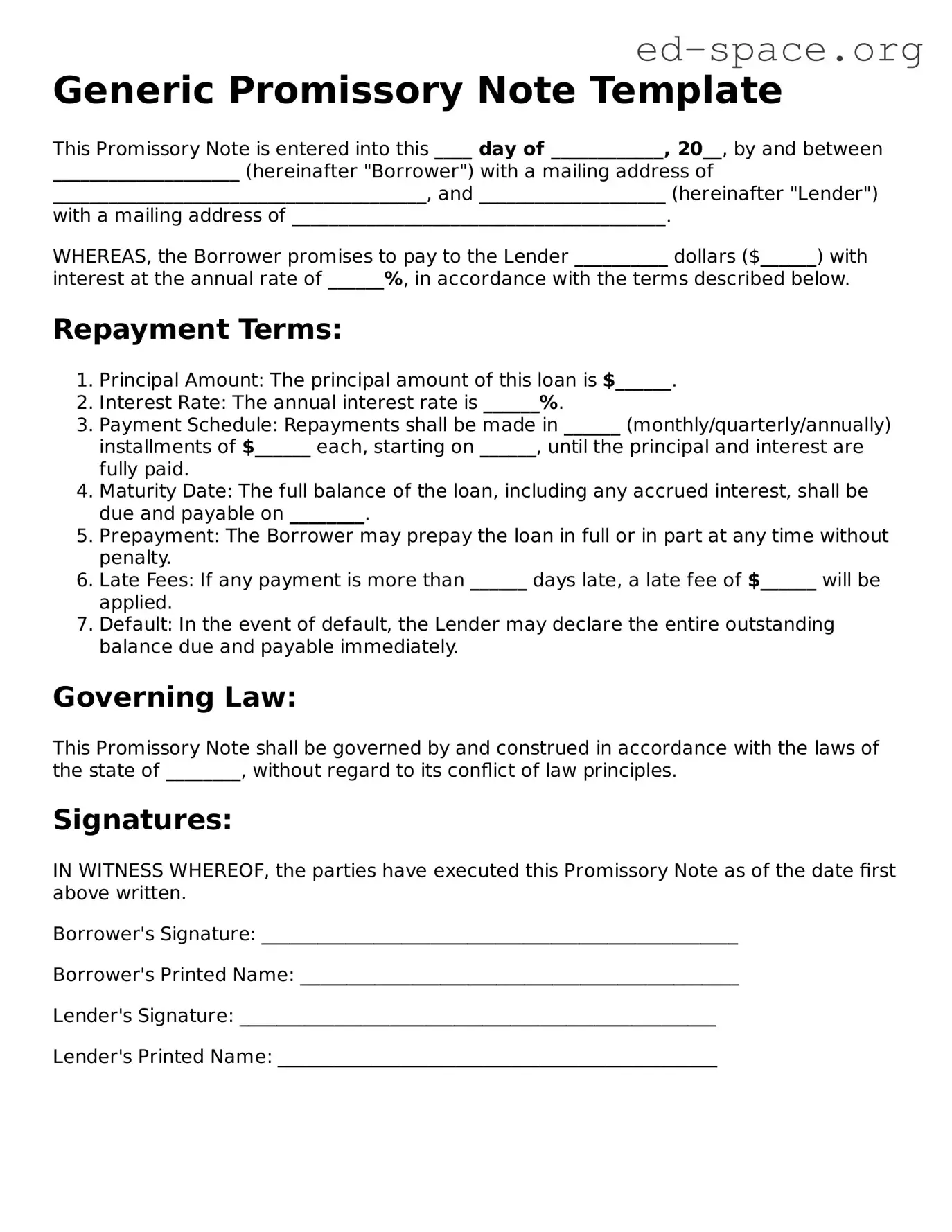Generic Promissory Note Template
This Promissory Note is entered into this ____ day of ____________, 20__, by and between ____________________ (hereinafter "Borrower") with a mailing address of ________________________________________, and ____________________ (hereinafter "Lender") with a mailing address of ________________________________________.
WHEREAS, the Borrower promises to pay to the Lender __________ dollars ($______) with interest at the annual rate of ______%, in accordance with the terms described below.
Repayment Terms:
- Principal Amount: The principal amount of this loan is $______.
- Interest Rate: The annual interest rate is ______%.
- Payment Schedule: Repayments shall be made in ______ (monthly/quarterly/annually) installments of $______ each, starting on ______, until the principal and interest are fully paid.
- Maturity Date: The full balance of the loan, including any accrued interest, shall be due and payable on ________.
- Prepayment: The Borrower may prepay the loan in full or in part at any time without penalty.
- Late Fees: If any payment is more than ______ days late, a late fee of $______ will be applied.
- Default: In the event of default, the Lender may declare the entire outstanding balance due and payable immediately.
Governing Law:
This Promissory Note shall be governed by and construed in accordance with the laws of the state of ________, without regard to its conflict of law principles.
Signatures:
IN WITNESS WHEREOF, the parties have executed this Promissory Note as of the date first above written.
Borrower's Signature: ___________________________________________________
Borrower's Printed Name: _______________________________________________
Lender's Signature: ___________________________________________________
Lender's Printed Name: _______________________________________________
